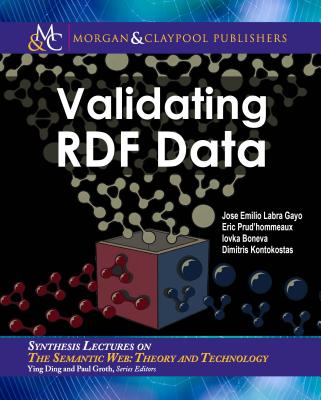買這商品的人也買了...
-
 $735Building the Web of Things: With examples in Node.js and Raspberry Pi (Paperback)
$735Building the Web of Things: With examples in Node.js and Raspberry Pi (Paperback) -
 無瑕的程式碼-敏捷完整篇-物件導向原則、設計模式與 C# 實踐 (Agile principles, patterns, and practices in C#)
無瑕的程式碼-敏捷完整篇-物件導向原則、設計模式與 C# 實踐 (Agile principles, patterns, and practices in C#)$790$616 -
 Working Effectively with Legacy Code : 管理、修改、重構遺留程式碼的藝術 (中文版)
Working Effectively with Legacy Code : 管理、修改、重構遺留程式碼的藝術 (中文版)$720$562 -
 $477Rust 權威指南 (The Rust Programming Language (Covers Rust 2018))
$477Rust 權威指南 (The Rust Programming Language (Covers Rust 2018)) -
 再強一點:用 Go語言完成六個大型專案(書況不佳限門市銷售))
再強一點:用 Go語言完成六個大型專案(書況不佳限門市銷售))$780$390 -
 $1,400Network Programming with Go: Learn to Code Secure and Reliable Network Services from Scratch
$1,400Network Programming with Go: Learn to Code Secure and Reliable Network Services from Scratch -
 黑帽 Python|給駭客與滲透測試者的 Python 開發指南, 2/e (Black Hat Python : Python Programming for Hackers and Pentesters, 2/e)
黑帽 Python|給駭客與滲透測試者的 Python 開發指南, 2/e (Black Hat Python : Python Programming for Hackers and Pentesters, 2/e)$450$356 -
 Spring REST API 開發與測試指南|使用 Swagger、HATEOAS、JUnit、Mockito、PowerMock、Spring Test
Spring REST API 開發與測試指南|使用 Swagger、HATEOAS、JUnit、Mockito、PowerMock、Spring Test$580$458 -
 Linux 網路內功修煉 - 徹底了解底層原理及高性能架構
Linux 網路內功修煉 - 徹底了解底層原理及高性能架構$780$616 -
 演算法生存指南
演算法生存指南$800$632 -
 從 Hooks 開始,讓你的網頁 React 起來 (第二版)(iT邦幫忙鐵人賽系列書)
從 Hooks 開始,讓你的網頁 React 起來 (第二版)(iT邦幫忙鐵人賽系列書)$720$562 -
 The Rust Programming Language, 2/e (Paperback)
The Rust Programming Language, 2/e (Paperback)$1,800$1,710 -
 哎呀!原來 React 這麼有趣好玩:圈叉、貪吃蛇、記憶方塊三款經典遊戲實戰練習(iThome鐵人賽系列書)
哎呀!原來 React 這麼有趣好玩:圈叉、貪吃蛇、記憶方塊三款經典遊戲實戰練習(iThome鐵人賽系列書)$620$484 -
 Smaller C|用於小型機器之精實程式碼 (Smaller C: Lean Code for Small Machines)
Smaller C|用於小型機器之精實程式碼 (Smaller C: Lean Code for Small Machines)$680$537 -
 白話機器學習
白話機器學習$780$616 -
 React 思維進化:一次打破常見的觀念誤解,躍升專業前端開發者(iThome鐵人賽系列書)【軟精裝】
React 思維進化:一次打破常見的觀念誤解,躍升專業前端開發者(iThome鐵人賽系列書)【軟精裝】$790$616 -
 Python 風格徹底研究|超詳實、好理解的 Python 必學主題 (Dead Simple Python)
Python 風格徹底研究|超詳實、好理解的 Python 必學主題 (Dead Simple Python)$980$774 -
 遞迴演算法大師親授面試心法:Python 與 JavaScript 解題全攻略 (The Recursive Book of Recursion)
遞迴演算法大師親授面試心法:Python 與 JavaScript 解題全攻略 (The Recursive Book of Recursion)$680$530 -
 建構機器學習系統實踐指南
建構機器學習系統實踐指南$620$490 -
 機器學習的訓練資料 (Training Data for Machine Learning)
機器學習的訓練資料 (Training Data for Machine Learning)$780$616 -
 資料工程基礎|規劃和建構強大、穩健的資料系統 (Fundamentals of Data Engineering)
資料工程基礎|規劃和建構強大、穩健的資料系統 (Fundamentals of Data Engineering)$980$774 -
 讓 AI 好好說話!從頭打造 LLM (大型語言模型) 實戰秘笈
讓 AI 好好說話!從頭打造 LLM (大型語言模型) 實戰秘笈$680$537 -
 日式 RPG 編年史:從 DQ 到 FF,角色扮演遊戲敘事手法完全剖析
日式 RPG 編年史:從 DQ 到 FF,角色扮演遊戲敘事手法完全剖析$380$300 -
 軟體工程師的英語使用守則:English for Developers
軟體工程師的英語使用守則:English for Developers$420$357 -
 內行人才知道的系統設計面試指南 第二輯 (System Design Interview – An Insider's Guide: Volume 2)
內行人才知道的系統設計面試指南 第二輯 (System Design Interview – An Insider's Guide: Volume 2)$820$648
相關主題
商品描述
With the constantly increasing user expectations in web services and applications, Semantic Web standards gain more popularity. This book will familiarize you with the leading controlled vocabularies and ontologies and explain how to represent your own concepts. After learning the principles of Linked Data, the five-star deployment scheme, and the Open Data concept, you will be able to create and interlink five-star Linked Open Data, and merge your RDF graphs to the LOD Cloud. The book also covers the most important tools for generating, storing, extracting, and visualizing RDF data, including, but not limited to, Protégé, TopBraid Composer, Sindice, Apache Marmotta, Callimachus, and Tabulator. You will learn to implement Apache Jena and Sesame in popular IDEs such as Eclipse and NetBeans, and use these APIs for rapid Semantic Web application development. Mastering Structured Data on the Semantic Web demonstrates how to represent and connect structured data to reach a wider audience, encourage data reuse, and provide content that can be automatically processed with full certainty. As a result, your web contents will be integral parts of the next revolution of the Web.
商品描述(中文翻譯)
傳統網站的一個主要限制是其內容的無組織和孤立,這些內容主要是為人類消費而創建的。這一限制可以通過組織和發布數據來解決,使用強大的格式為網頁內容添加結構和意義,並將相關數據彼此連結。計算機可以更好地「理解」這些數據,這對於任務自動化非常有用。提供語義(意義)給軟體代理的網站形成了語義網(Semantic Web),這是萬維網的人工智慧擴展。與傳統網路(「文檔網」)相比,語義網包括「數據網」,它連接「事物」(代表現實世界中的人類和物體),而不是對計算機來說毫無意義的文檔。《掌握語義網上的結構化數據》解釋了語義網的實際方面和背後的理論,以及如何使用結構化數據,如 HTML5 Microdata 和 JSON-LD,來改善您網站在下一代搜尋引擎結果頁上的表現,並在 Google 知識面板上顯示。您將學習如何使用資源描述框架(Resource Description Framework, RDF)以機器可解釋的形式表示任意的人類知識領域,RDF 是語義網的基石。您將看到如何在專門設計的圖形數據庫中存儲和操作 RDF 數據,如三元組存儲(triplestore)和四元組存儲(quadstore),這些數據庫在互聯網行銷、社交媒體和數據挖掘中被利用,形成大數據應用,如 Google 知識圖譜、Wikidata 或 Facebook 的社交圖譜。
隨著用戶對網路服務和應用的期望不斷提高,語義網標準越來越受歡迎。本書將使您熟悉主要的受控詞彙和本體,並解釋如何表示您自己的概念。在學習了連結數據的原則、五顆星的部署方案和開放數據概念後,您將能夠創建和互聯五顆星的連結開放數據,並將您的 RDF 圖合併到 LOD 雲中。本書還涵蓋了生成、存儲、提取和可視化 RDF 數據的最重要工具,包括但不限於 Protégé、TopBraid Composer、Sindice、Apache Marmotta、Callimachus 和 Tabulator。您將學會在流行的 IDE(如 Eclipse 和 NetBeans)中實現 Apache Jena 和 Sesame,並使用這些 API 進行快速的語義網應用開發。《掌握語義網上的結構化數據》展示了如何表示和連接結構化數據,以接觸更廣泛的受眾,鼓勵數據重用,並提供可以被自動處理的內容,從而使您的網頁內容成為網路下一次革命的不可或缺的一部分。












